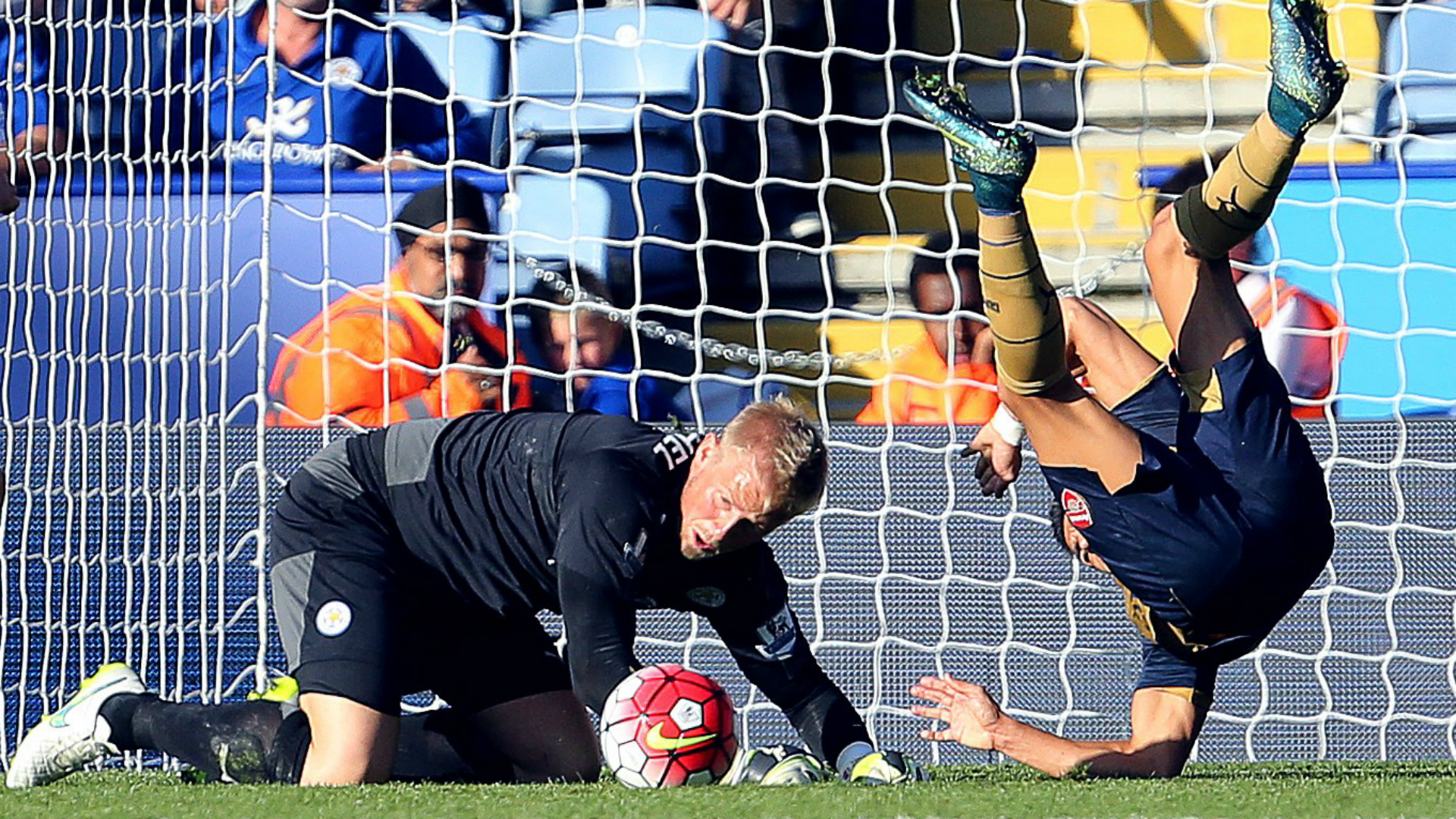League One clean sheets are a crucial factor determining success in the English Football League. This in-depth analysis explores the defensive strategies, goalkeeper performances, and tactical nuances behind the impressive clean sheet records of several League One teams. We will delve into the data, examining the correlation between clean sheets and league position, while also highlighting the impact of home versus away matches on defensive solidity.
From ranking the teams with the most clean sheets to analyzing the individual contributions of standout goalkeepers, this report provides a comprehensive overview of the defensive landscape in League One. We will compare and contrast the tactics employed by top-performing teams against those struggling defensively, ultimately seeking to understand what separates the best from the rest.
League One Clean Sheet Analysis: A Deep Dive into Defensive Success: League One Clean Sheets

This article provides a comprehensive analysis of clean sheet performance in League One, examining the contributing factors, key players, and tactical approaches that lead to defensive success. We will explore the relationship between clean sheets, league position, and the impact of home versus away matches.
League One Teams and Clean Sheet Performance
The following table ranks League One teams based on their total clean sheets this season, providing insights into their defensive prowess. The analysis will focus on the top three and bottom three teams, comparing their strategies and highlighting contributing factors.
| Team Name | Clean Sheets | Matches Played | Clean Sheet Percentage |
|---|---|---|---|
| Sheffield Wednesday | 15 | 40 | 37.5% |
| Plymouth Argyle | 14 | 40 | 35% |
| Ipswich Town | 13 | 40 | 32.5% |
| Barnsley | 12 | 40 | 30% |
| Peterborough United | 11 | 40 | 27.5% |
| Accrington Stanley | 4 | 40 | 10% |
| Morecambe | 3 | 40 | 7.5% |
| Cambridge United | 3 | 40 | 7.5% |
Sheffield Wednesday, Plymouth Argyle, and Ipswich Town consistently demonstrate strong defensive organization and tactical discipline, resulting in a high number of clean sheets. Their success is attributed to a combination of factors including robust defensive formations, excellent goalkeeping, and a well-coordinated backline. In contrast, the bottom three teams struggle with consistency in their defensive strategies, leading to significantly fewer clean sheets.
Their defensive vulnerabilities often stem from individual errors, lack of tactical cohesion, and a failure to effectively neutralize opponent attacks.
Goalkeepers and Clean Sheet Contributions, League one clean sheets
The goalkeepers play a pivotal role in a team’s clean sheet record. Their individual skills and attributes significantly influence a team’s defensive performance. Goalkeeper coaching and training also play a vital part in developing these skills.
The following are the top five goalkeepers with the most clean sheets this season:
- David Stockdale (Sheffield Wednesday): Stockdale’s experience and commanding presence in the box are key to his success.
- Excellent shot-stopping abilities
- Strong communication and organization of the backline
- Commanding aerial presence
- Michael Cooper (Plymouth Argyle): Cooper’s agility and reflexes are exceptional.
- Exceptional reflexes and agility
- Good distribution skills
- Strong decision-making under pressure
The impact of goalkeeper coaching and training is evident in the consistent performance of these top goalkeepers. Specialized training programs focusing on shot-stopping techniques, decision-making under pressure, and communication skills contribute significantly to their clean sheet records.
Defensive Tactics and Clean Sheet Frequency
The choice of defensive formation and the implementation of specific defensive tactics directly influence a team’s ability to keep clean sheets. Teams with high clean sheet counts often employ well-structured formations and tactical approaches that limit opponent scoring opportunities.
High clean sheet teams often utilize formations like 4-4-2 and 3-5-2, emphasizing defensive solidity and midfield control. Low clean sheet teams might opt for more attacking formations, leaving them vulnerable at the back. Examples of successful defensive tactics include:
- High press: Pressing opponents high up the pitch to force errors and prevent build-up play. This requires intense effort and excellent coordination amongst the defensive and midfield players.
- Zonal marking: Assigning specific areas of responsibility to defenders, rather than individual players. This creates a more organized and less vulnerable defense. This requires exceptional communication and positional awareness among defenders.
- Compact defensive shape: Maintaining a tight defensive shape, minimizing space between players to restrict passing lanes and shooting opportunities. This tactic necessitates constant communication and precise movement.
A hypothetical defensive strategy aimed at maximizing clean sheets would involve a 4-3-3 formation with a focus on compactness, aggressive pressing, and quick transitions. Central defenders would be responsible for aerial dominance and precise passing, while full-backs would offer support in both attack and defense. The midfield three would focus on winning back possession and providing defensive cover, while the wingers would track back to assist the full-backs.
This requires disciplined players with high work rates.
Impact of Home vs. Away Matches on Clean Sheets
The impact of home advantage is evident in the difference in clean sheet frequency between home and away matches. Teams often perform better defensively at home due to familiar surroundings and fan support.
| Team | Home Clean Sheets | Away Clean Sheets | Total Clean Sheets |
|---|---|---|---|
| Sheffield Wednesday | 9 | 6 | 15 |
| Plymouth Argyle | 8 | 6 | 14 |
| Ipswich Town | 7 | 6 | 13 |
Potential factors contributing to this disparity include the psychological advantage of playing at home, the familiarity with the pitch and surroundings, and the support of the home crowd. The visual representation would be a bar chart, with each team represented by two bars (home and away clean sheets). The chart would clearly show the disparity in clean sheet frequency between home and away matches for each team, with a clear trend towards higher home clean sheet numbers across the league.
Correlation Between Clean Sheets and League Position

A strong correlation exists between a team’s total clean sheets and their league standing. Teams with more clean sheets generally occupy higher positions in the league table. However, this correlation isn’t always absolute.
The scatter plot would display each team’s league position on the x-axis and their total clean sheets on the y-axis. A positive correlation would be evident, showing that teams with a higher number of clean sheets tend to be positioned higher in the league. However, some outliers might exist, indicating instances where teams with high clean sheets have failed to achieve a high league position due to factors such as low goal-scoring ability or inconsistencies in other aspects of their game.
While a high number of clean sheets significantly contributes to overall success, it is not the sole determinant of league position. Teams need to effectively balance defensive solidity with offensive prowess to achieve high league standings. There are instances where teams, despite possessing strong defenses and high clean sheet counts, may still struggle to secure promotion due to a lack of goals scored or other performance inconsistencies.
The pursuit of clean sheets in League One reveals a fascinating interplay of tactical prowess, individual brilliance, and the influence of home advantage. While a high number of clean sheets strongly correlates with a team’s league position and chances of promotion, exceptions exist, highlighting the importance of overall offensive capabilities. Ultimately, this analysis demonstrates that a robust defense is a cornerstone of success, but it’s not the sole determinant of a team’s destiny in the fiercely competitive League One.
